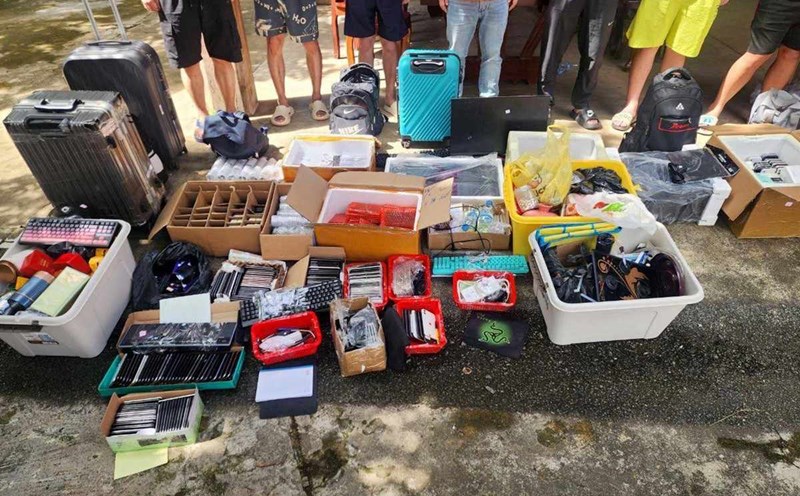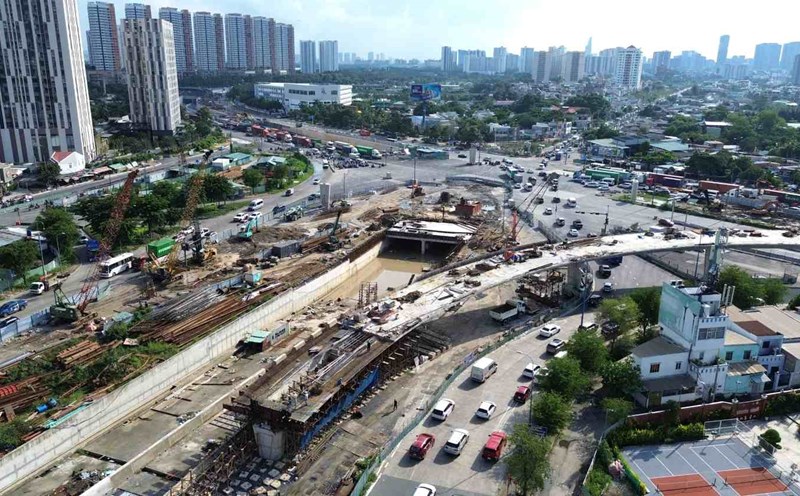Ready to respond to storm No. 5 (international name is Kajiki), information from the Office of the National Civil Defense Steering Committee said that the Ministry of National Defense has maintained 346,210 officers and soldiers (CBCS), of which the army: 114,120 people, militia: 232,090 people, 8,200 vehicles of all kinds (car: 5,061; ship: 216; Boat, canoe: 2,295; special vehicles: 623; plane: 5).
The Border Guards (BDBP) of provinces and cities on the sea route from Quang Ninh to Khanh Hoa have coordinated with localities, families of ship owners and captains to notify, count, and guide 59,613 vehicles/248,820 people who know the developments and direction of the storm to proactively move around and escape from the danger zone.
Of which, operating in the North East Sea and Hoang Sa archipelago: 262 ships/2,054 people; operating in other areas: 14,246 ships/44,310 people; anchored at ports: 45,105 ships/202,456 people. Vehicles in the affected area have received warning information and are moving around the bypass.
According to the forecast of the National Center for Hydro-Meteorological Forecasting, due to the influence of the storm, from the night of August 24, on the mainland from Thanh Hoa to Quang Tri, the wind will gradually increase to level 7-9, then increase to level 10-11, near the storm center level 11-12, gusting to level 14.
From the night of August 24 to 27, the area from Thanh Hoa to Quang Tri will have heavy rain, common rainfall of 150-300mm, some places over 600mm, very high risk of flash floods, landslides in mountainous areas and flooding in low-lying areas, riverside areas, urban areas.
This is a very strong storm, with a very wide range of influence, moving very quickly, especially dangerous, domestic and international forecasters both predict that the storm will make landfall directly on our mainland with strong intensity.
Responding to storm No. 5, the General Staff of the Vietnam People's Army (VPA) issued a telegram requesting agencies and units to strictly maintain the on-duty regime, proactively monitor and grasp the developments of storms and floods caused by storms; deploy preventive measures to ensure the safety of storms, warehouses, and works under construction.
Prepare forces and means to be ready to respond promptly and effectively when situations arise. Ensure absolute safety of people and vehicles while performing tasks.
The dispatch also stated that Military regions 3, 4, 5: Direct the Military Commands of provinces and cities to coordinate with the Department of Agriculture and Environment and relevant agencies to advise local Party committees and authorities to continue to inspect and review response plans and solutions in accordance with reality; identify key areas of natural disaster, areas at risk of flash floods, landslides, dykes, embankments, dams, vulnerable dams, flooded and isolated areas; proactively help authorities and people build houses, evacuate households in areas at high risk of landslides, flash floods, deep flooding to safe places; ensure vulnerable works, unfinished works, industrial parks, urban areas, concentrated production areas and residential areas, not to be afraid of unfortunate damage, and to avoid unfortunate damage to people. Proactively arrange forces and mobile means to support people in localities in areas at high risk of being isolated and isolated due to the impact of storms and floods.











